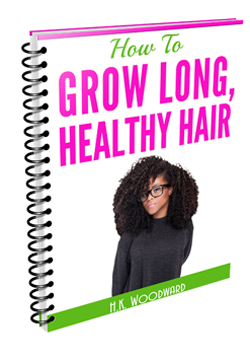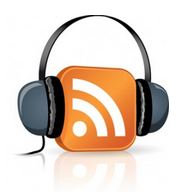 Click for Queen Nia B's styles, journey & regimen Click for Queen Nia B's styles, journey & regimen
The procedure for making moisturizers is exactly identical to the process for making conditioners.
The key difference between a conditioner and a moisturizer is in the concentration of ingredients used. The usage rate for most ingredients that go into hair products dictates that you use less in products that you leave on compared to products that you rinse off. A moisturizer is essentially a leave-on conditioner and as such is less concentrated that rinse-off conditioners. I have had people email me with hair issues because they applied rinse-off conditioners and let them sit in their hair for hours on end. The worst offenders go to bed with the conditioner on their head and wake up with a bald patch the next morning – this is because conditioners are not meant to be left on for more than 30 minutes. Any extra time does absolutely nothing to improve the condition of your hair. In summary, conditioners are concentrated products designed to be applied to hair then washed off, moisturizers are less concentrated leave-on products. Ultimately, both conditioners and moisturizers (a.k.a. leave-in conditioners) are designed to improve and maintain the condition of your hair. They soften, boost shine and aid detangling to varying degrees depending on the brand. 
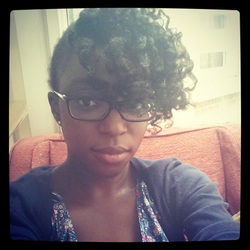 Click for Queen Lola's Hair Regimen Click for Queen Lola's Hair Regimen
You would think that every kinky/curly-haired girl conditions their hair after a shampoo as standard, wouldn't you? Nope, that is not the case so this is a worthwhile question:
What does happen to hair when it's not conditioned following a shampoo? Firstly, of course, it's perfectly safe. No medical harm will occur if you shampoo your hair and just leave it at that but your hair will get awfully dry. This is the case even for people with straight or mildy wavy hair. If you're naturally dry-haired shampooing without a conditioner application afterwards will lead to hair that is:

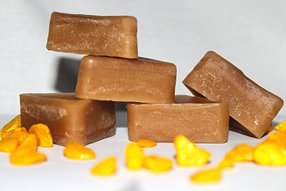
Personally, I don't think conditioner bars work well for kinky-curly hair because they have no water and even after a shampoo we really need that moisture; for that reason, I choose not to make or use them.
In addition, if you have very thick hair it is hard to apply conditioner evenly throughout your head using a conditioner bar. If you have frizzy hair too then the rubbing process to get the conditioner to "latch" onto your hair strands is not going to help tame your frizz either. However, this is just my opinion. Have you used a conditioner bar before? Please add your comment.
 Click For Toia's Hair Regimen Click For Toia's Hair Regimen
Our first consideration in making a shampoo was simple: to get an effective cleanser with a secondary goal of making it a little moisturising and conditioning too because our hair is so dry.
With a conditioner there are several primary goals:
Less important goals include:

As I introduce you to ingredients I will tell you how each ingredient helps to further one or several of the above goals. The key ingredients in a conditioner have a positive charge so that they stick to negatively charges hair.
Get your FREE ebook on How To Grow Long, Healthy Natural Kinky or Curly Hair. 
You might also like: 
When you're making your own conditioner these are all the yummy ingredients you will want to include:
 Click For Toia's Regimen Click For Toia's Regimen
Technically, a product has to contain cationic ingredients to be called a conditioner. In the past I have made videos for you on how to make DIY conditioners using food ingredients:
When you are formulating a conditioner the first thing you should decide is which cationic quaternary compound you will use. The common options are:

 Click For Toia's Hair Regimen Click For Toia's Hair Regimen
Whilst shampoos contain ingredients designed to lift dirt and build-up off your hair, conditioners contain ingredients designed to stick to it.
Once you have washed your hair and your hair is clean it will always need some "nutrition" to replace goodies that have been lost during the cleansing process. This is why I think a proper cleanse with a shampoo is important: you don't want the conditioner sticking "the good stuff" on top of dirt. The conditioner won't do its work properly unless it's actually in contact with your hair. So, How Do Conditioners Make The Ingredients Stick To Hair Hair is negatively charged. So, positively charged ingredients stick to it and that is what a conditioner contains - positively charge ingredients called "cationic polymers" and "cationic quaternary compounds". Remember that line from science that everyone seems to apply to everything including relationships, "opposites attract" - that's exactly waguan in this situation. The positively charged stuff in conditioner gets attracted to our negatively charged hair. 
These positively charged ingredients are sooo attracted to hair that they stay stuck to it when you rinse out the conditioner. They are washed off the next time you shampoo your hair. This is why, as you know, I am anti co-wash only regimens.
Healthy natural hair has a pH of 4.0 to 5.5. Chemically treated and damaged hair has a high pH (i.e. it's less acidic, more alkaline) and it is even more negatively charged so positively charged conditioners are even more attracted to it. This is good because people with damaged and relaxed hair need the ingredients and protection of conditioners a lot more. The positively charged ingredients in conditioner:

 Click For Sunshine's Hair Regimen Click For Sunshine's Hair Regimen
In the past I wrote about the 5 types of conditioner that are found commercially:
As with most other natural-haired girls I only wash my hair once a week so all my conditioners are deep conditioners. They can, of course, be rinsed of immediately for a quick condition but maximum benefit will is derived by allowing them to sit in your hair for 15-20 minutes under a shower cap. I used to think that only black people have dry hair (unexposed much?!), however, when I became a hair fanatic I learnt from some of my white and Asian friends and relatives that they suffer from dry hair too and as a result, don't wash their hair daily. They wash their hair more often than me but my DIY Conditioner Recipes are perfect for them too. Conditioner Differences 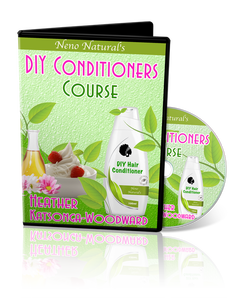
The overall recipe is the same for all conditioners. The distinction is that different conditioners contain different extracts and herbs that have a different impact on the feel of hair.
Deep conditioners contain a higher concentration of these nourishing ingredients. A basic commercial conditioner does not contain any herbs and extracts just oils and ingredient that help your hair absorb the oils. For instance, in my "Love Me" Conditioner For Weak, Brittle & Damaged Hair I add extra proteins to fortify weak and brittle hair. If you have short hair or the type of hair that can tolerate a daily wash then I suggest suggestion for changing my conditioner recipes in my DIY Conditioners ebook. Basically:
When you are buying a commercial conditioner (rather than making one yourself), read the label to see what is in there and how it's expected to help your hair. Don't buy a general conditioner when you have dry hair, that type of conditioner is targeted towards the average head (i.e. in developed countries this will be straight and wavy hair types) so it won't cater towards people with dry hair issues. Note that leave-in conditioners are the same thing as a moisturiser, it's just a different name for them so they will be covered in the DIY Moisturizers Course. 
 Classic box braids. Classic box braids.
Yes, but not indefinitely!
Most of the benefit of regular conditioners comes from the stuff that coats your hair. These ingredients are designed to coat hair so that it looks more shiny and strengthens hair from the outside. That said, many products that are designed specifically for natural black hair recognise the fact that our hair is weaker so they include more ingredients that adsorb (penetrate) into hair and strengthen the hair fiber from the inside. This is especially true of deep conditioners. That said, this penetration process will happen within 20 to 30 minutes. Keeping the conditioner on for more than 30 minutes will have no added benefit whatsover. Let me explain it another way: you know when you have wilted salad leaves in the fridge? When you immerse the leaves in cold water they water goes into the leaf and it starts to look more solid again. They look fresher and can be served. After that point (when the leaves are "turgid") keeping the leaves in the water for longer has no benefit whatsoever. In fact, if it's a hot day those leaves will start rotting right there in the water! The key with using a conditioner is to make sure that it is evenly spread over all your hair.
In summary, if you leave your conditioner on your head for hours and hours there is no added benefit whatsoever. If you're like "but it feels softer" that has nothing to do with the conditioner, it's just the moisture. If you rinsed all the conditioner off and put a shower cap back on you would get the same result!
 Click for Nia's regimen. Click for Nia's regimen.
Hair damage is a very common problem.
Over time the outer layer of hair, the cuticle, naturally erodes away, breaks and lifts. These are points of weakness where the hair is likely to break. I like to refer to these gaps in hair as “hair potholes” (note that this is not a technical term!). Bad hair management, e.g. excessive use of heat and rough styling equipment increases the likelihood of such potholes occurring. Most conditioners help to prevent such damage but at the moment none actually repair it. Scientists are working to solve this problem; just like a broken or fractured bone can be completely healed they want to do the same with damaged hair. What would be needed to repair the hair would be something that permanently fills the hole. At the moment, conditioners fill these gaps but after a couple of washes those holes and gaps are gaping open again. It’s just like having a road with potholes and filling those holes with sand, when the rain comes you’re back to square one! Anyhow, the first major move in technology to repair hair is something called Polyelectrolyte Complex, PEC. It consists of a negatively charged ion called PVM/MA polymer and a positively charged ion called Polyquaternium-28. How does PEC work? Instead of just coating hair like most conditioners do it penetrates the hair and seals it from inside. When PEC penetrates hair and dries the split end is permanently fixed – the pothole has been filled with tar! As the technology is still in its infancy I can’t ascertain the strength of this fix. That is, does one application fix that hair strand permanently or is re-application needed to maintain the same broken strand every so often. Also, does one application fix all the damage in one hit or are several rounds of conditioning needed to get to all the damaged hairs? What factors work against PEC? E.g. does blow drying and straightening hair with heat cause the fixed hair to get damaged again more quickly? Many questions remain open and more tests are needed to confirm this. 
References:
Get your FREE ebook on How To Grow Long, Healthy Natural Kinky or Curly Hair. 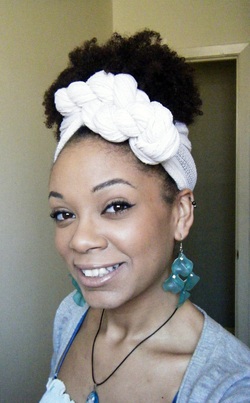 Click for Tori's regimen. Click for Tori's regimen.
I know some co-washers will start reading this blog feeling very irate that I would even suggest that co-washing is a bad idea but hear me out for a second before you get annoyed with me.
Now, I am not totally anti-co-washing, in fact, I think if you want to wash your hair more than once a week it is far better to co-wash between weekly shampoos. A few people I know have found that after co-washing only their hair gets drier and more brittle and they think that it's the co-washing that is to blame. The answer is: NO. Co-washing does not make your hair more dry in itself but it is EXTREMELY restrictive in what products you can use. Some ingredients in conditioners and leave-in moisturizers stick to your when applied so that they can keep your hair conditioned and moisturized for a while after the conditioning or moisturizing session. Some of these ingredients, will not wash off without shampoo. So when you re-apply your products these ingredients continue to build up and build up until your hair is indeed brittle, dry and starts breaking. Most co-washers are not educated enough about ingredients to know what they need to avoid. In fact, although I know a fair amount of what's a no-no for co-washers I would need to take a list when I go shopping because I wouldn't remember everything off by heart. Importantly, no list is exhaustive. This means no list will list everything and no list can because new ingredients are coming out all the time. So, what should co-washers avoid, in general:
In summary, co-washing can work if you make an effort to learn everything that must be avoided, however, in my opinion a co-wash only regimen is not worth it because shampoo does have an important role to play in healthy hair management: A clean, pliable and healthy scalp is essential for natural hair growth and clean hair is need to moisturise and condition hair effectively. 
You might also like:
Get your FREE ebook on How To Grow Long, Healthy Natural Kinky or Curly Hair. |
I now blog about wealth creation - so if you have any money questions meet me there, you can do all sorts of cool things like leave me a voicemail.
By Heather Katsonga-Woodward
I was a natural hair blogger and mixtress living between London & Chicago from 2012 to 2017. I always thought I was 4C but some say 4B; images below - you decide! Heather xx Categories
All
Archives
November 2016
|


